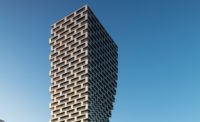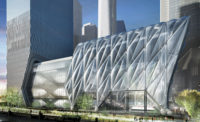Most architects of tall buildings will admit that height for height’s sake is an empty pursuit: there is so much more involved than garnering a spot in the record books. The following towers bear this out. They make their mark with inventive facades, innovative structural systems, and new strategies for defining public space—and they still meet the sky in graceful ways.
- Marina One by Ingenhoven Architects
- Salesforce Tower by Pelli Clarke Pelli
- Shenzhen International Energy Mansion by Bjarke Ingels Group
- EY Centre by fjmt
|
Continuing Education
 To earn one AIA learning unit (LU), including one hour of health, safety, and welfare (HSW) credit, read all four articles in the “Continuing Education: Tall Buildings” section and complete the online test. Upon passing the test, you will receive a certificate of completion, and your credit will be automatically reported to the AIA. Additional information regarding credit-reporting and continuing-education requirements can be found online at continuingeducation.bnpmedia.com . To earn one AIA learning unit (LU), including one hour of health, safety, and welfare (HSW) credit, read all four articles in the “Continuing Education: Tall Buildings” section and complete the online test. Upon passing the test, you will receive a certificate of completion, and your credit will be automatically reported to the AIA. Additional information regarding credit-reporting and continuing-education requirements can be found online at continuingeducation.bnpmedia.com .
Learning Objectives
AIA/CES Course #K1807A
For CEU credit, read the “Continuing Education: Tall Buildings” section and take the quiz at continuingeducation.bnpmedia.com, or use our Architectural Record Continuing Education app, available in the iTunes store. structure, finishes, and other original fabric when
a building is moved.
significant buildings.
|





Post a comment to this article
Report Abusive Comment